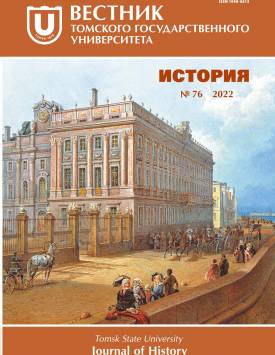From “home” to “migrant home”: the development of the category of dwelling in sociocultural anthropology
The article is devoted to the evolution of the category of «home» and «migrant home» in socio-cultural anthropology. The work is divided into three logically related semantic parts. The first part «From «turns» in anthropology to «turns» in the concept of dwelling» creates a context into which the future text of the article is immersed. Particular attention is paid to the research understanding of “house” in the context of functionalism (B. Malinovsky), structuralism (K. Levi-Strauss), constructivist structuralism (P. Bourdieu), works related to the ontological turn in anthropology (F. Descola), feminist and gender studies. The second part of the article analyzes the history of emergence of the concept of transnationalism. As a starting point for the development of transnationalism, the book by A. Appadurai «Modernity at Large: Cultural Dimensions of Globalization» was taken. The main provisions of the author's work are highlighted. The same section reveals the foundations of transnationalism, which are reflected in the work of the founders of this theoretical framework (N. Glick-Schiller, K. Blank-Zanton and L. Bash). The transnational paradigm has come to be seen as an optics that visualizes the process of structuring a new reality by mobile subjects, allowing them to simultaneously exist in different social contexts separated by a large geographical distance. The third part refers to specific cases that reveal the essence of the «migrant home» according to the scientific principles of transnationalism. The analysis of foreign and domestic literature gives grounds to single out the “signs” of the “migrant home”. Firstly, the house is usually temporary, because the logic of transnationalism tells us that the life strategies of a transmigrant are extremely mobile: a labor migrant often changes jobs, acquires new social connections, and does not leave the thought of returning to his homeland. Secondly, the «migrant house» (if we are not talking about second generation migrants and about women migrants) is usually materially and symbolically empty - it makes no sense to acquire something valuable or dimensional if soon you will have to move again ... Third, a «migrant home» which is «here» (in the receiving country) often exists for a home «there» (in the country of origin). The house is subjected to symbolic comprehension, the house is subjected to a value assessment «there», and in this case the majority of labor strategies, and migrations between houses «here» will be made for the construction of a house «there». Fourthly, transnational family interaction is also very often conducted around some kind of discus sion about home «there». Fifth, the «migrant house» «there» is a posponed and imagined state of peace from the burdens of the present life.
Keywords
dwelling, «migrant home», transnationalismAuthors
| Name | Organization | |
| Sadyrin Anton A. | Tomsk State University | sadyrin.1994@mail.ru |
References

From “home” to “migrant home”: the development of the category of dwelling in sociocultural anthropology | Tomsk State University Journal of History. 2022. № 76. DOI: 10.17223/19988613/76/18
